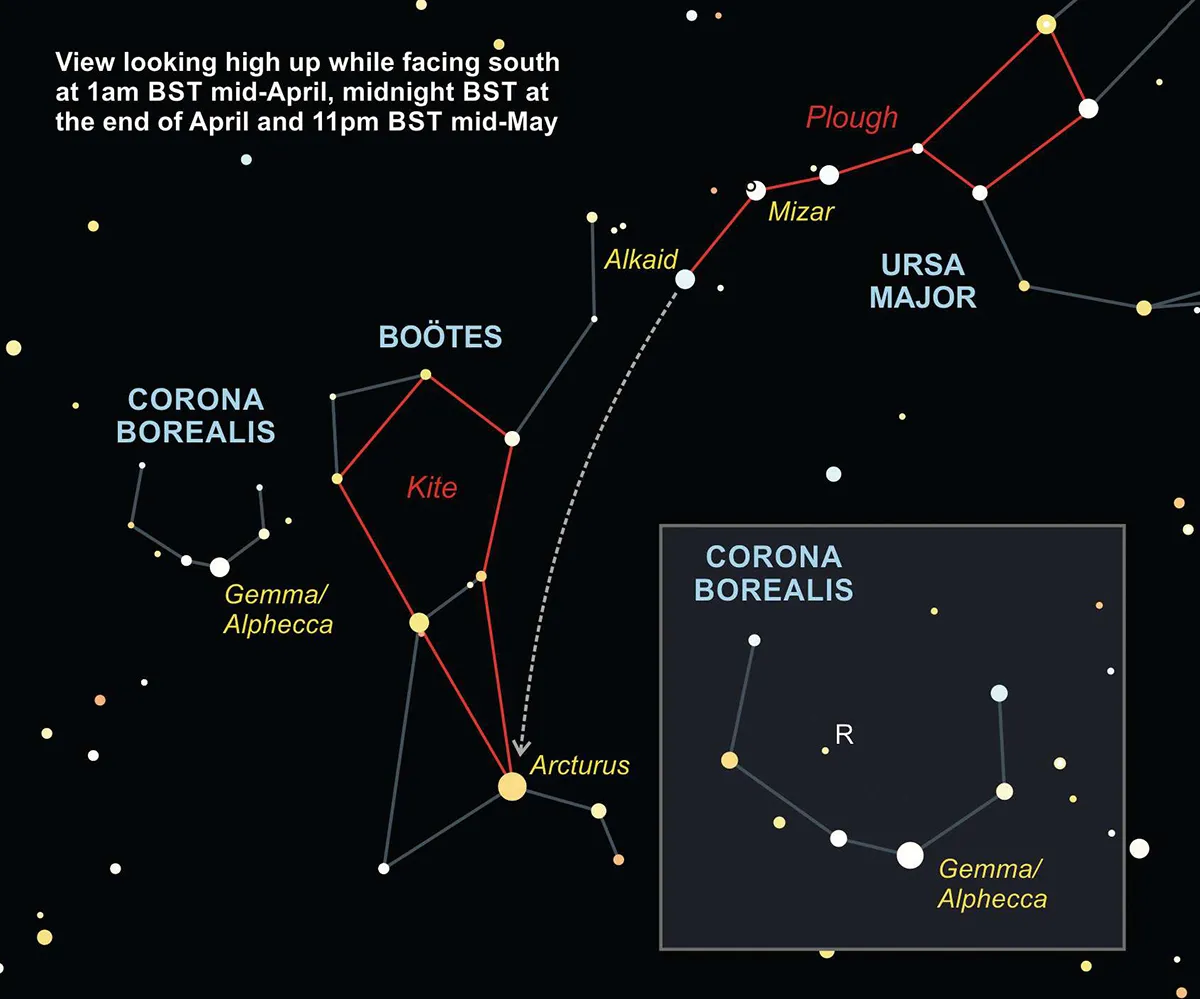Corona Borealis is a small, attractive semi-circular constellation visible in the spring night sky from mid-April to mid-May. It represents the Northern Crown and as its name infers, has a southern counterpart called Corona Australis, the Southern Crown, which never rises above the UK’s horizon.
To locate Corona Borealis start from the Plough, extending its handle away from the blade and following the natural arc to reach the bright orange star Arcturus in Boötes the Herdsman. The core of Boötes is kite-shaped, Arcturus marking the kite’s pointed end. If it helps to visualise it, the kite appears as high as the Plough is long.

Corona Borealis sits off the left shoulder of the kite, its distinctive semi-circle having a diameter a fraction larger than the distance between the last two stars furthest from the blade in the Plough’s handle; Mizar and Alkaid.
The crown’s brightest star has two common names, Gemma and Alphecca, and it represents the jewel in the crown. The inside of the pattern appears empty most of the time. However, a variable star known as R Coronae Borealis can sometimes be seen. This star periodically ejects clouds of carbon, which eventually cools to form soot, therefore blocking the star’s light and causing it to dim.
When the soot disperses, the star brightens. It can just be seen with the naked eye from a dark sky location when brightest, but when faintest you’ll need a large telescope to spot it. This behaviour has led to R Coronae Borealis being nicknamed the ‘dust puff star’.
Corona Borealis is associated with Theseus and the Minotaur in Greek mythology. In love with Theseus, Ariadne gave him a ball of thread which allowed him to enter the Minotaur’s labyrinth, kill the beast and escape back to freedom. Theseus subsequently abandoned Ariadne, who went on to marry Dionysus. The pattern represents the crown given to Ariadne by Dionysus.
Read more:
- How can I see the Andromeda Galaxy?
- How do I find the North Star?
- How can I spot Hydra in the night sky?
- How to spot the Leo in the night sky
To submit your questions email us at questions@sciencefocus.com (don't forget to include your name and location)